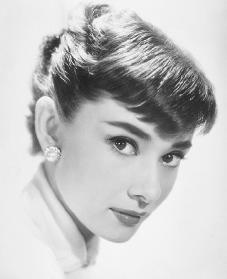Geronimo's Valentine
Author: Geronimo Stilton (Elisabetta Dami's pen name)
Published: In 2009 by Scholastic
ISBN: 978-0545021364
Synopsis:
Geronimo's Valentine is the 36th volume in the Geronimo Stilton Series. Geronimo is a publisher of The Rodent's Gazette, the most "famouse" newspaper on Mouse Island, but his true passion lies in writing adventure stories. He's a shy fellow who seems to have a knack for finding trouble everywhere he goes and this Valentine's Day is no different. All his well thought out plans are ruined after he receives an urgent call from his detective friend Hercule Poirat. "Stilton, I need your help solving a Cheesecake Mystery," Hercule says and before he knows it Geronimo is once again swept up into another crazy, "fabumouse" adventure! Join Geronimo as he relays his tale through colorful illustrations and uniquely printed text.
My Reaction:
 When I happened upon Geronimo Stilton in a bookstore one day I knew I had found something I had to read. I was hooked by the colorful and unique fonts used by the author to emphasize certain words and phrases. I had never encounter a book written in such an engaging way. So, of course I immediately paid a visit to my public library. Although the characters are a bit one dimensional and the mystery plot is formulaic I can't help but love this book.
When I happened upon Geronimo Stilton in a bookstore one day I knew I had found something I had to read. I was hooked by the colorful and unique fonts used by the author to emphasize certain words and phrases. I had never encounter a book written in such an engaging way. So, of course I immediately paid a visit to my public library. Although the characters are a bit one dimensional and the mystery plot is formulaic I can't help but love this book.Geronimo Stilton is an endearing character with a charming voice. His first person account makes the story entertaining and adds a personal touch. While reading this book I found myself completely engrossed in the story. But what is it about this book that is so appealing? In truth it's really just another story about human-like mice living in a mouse town where strange things are sure to happen. And yet, it's a bestseller.
 I think the appeal for adults and children alike, rests in the very unique style of these books. The colorful fonts immediately grab your attention. I feel like they could make even the most hesitant reader want to know more because it makes the words less intimidating. The poignant color choices help young readers better comprehend the story, because the selected fonts can act as context clues for certain words and phrases. The font also helps the reader recognize and identify the current mood and feelings of Geronimo Stilton, the narrator of the story. For instance, every time Geronimo gets hurt a word like "OUUUUUCH!!!" appears in big squiggly red letters. Similarly, the reader is able to infer, based on the color and font of the words Geronimo uses to describe his Valentine's Day plans, that Geronimo is feeling particularly romantic at the start of the book.
I think the appeal for adults and children alike, rests in the very unique style of these books. The colorful fonts immediately grab your attention. I feel like they could make even the most hesitant reader want to know more because it makes the words less intimidating. The poignant color choices help young readers better comprehend the story, because the selected fonts can act as context clues for certain words and phrases. The font also helps the reader recognize and identify the current mood and feelings of Geronimo Stilton, the narrator of the story. For instance, every time Geronimo gets hurt a word like "OUUUUUCH!!!" appears in big squiggly red letters. Similarly, the reader is able to infer, based on the color and font of the words Geronimo uses to describe his Valentine's Day plans, that Geronimo is feeling particularly romantic at the start of the book.Overall, I think this is a wonderful transitional series for children who enjoyed reading graphic novels like Babymouse. Geronimo Stilton books rely on illustrations similar to those in these graphic novels, however unlike graphic novels, their is full paragraph narration. This allows children to adjust to reading a chapter books while still have visual supports to help them comprehend the story. I hope others enjoy these charming, little books as much as I do.
My Rating (1-5 stars): 



Still Curious:
On each of the Geronimo Stilton books the author is officially listed as Geronimo Stilton, the mouse himself. As much as we'd all like this to be true, it's impossible to not wonder who the real person is behind the words. Well I'm here to give you an answer. Her name is Elisabetta Dami and according to The Geronimo Stilton News Site she is an author in Italy.
For more information about other Geronimo books and similar series visit Geronimo Stilton's World
You can also check out this episode of Geronimo's very own TV show:




















